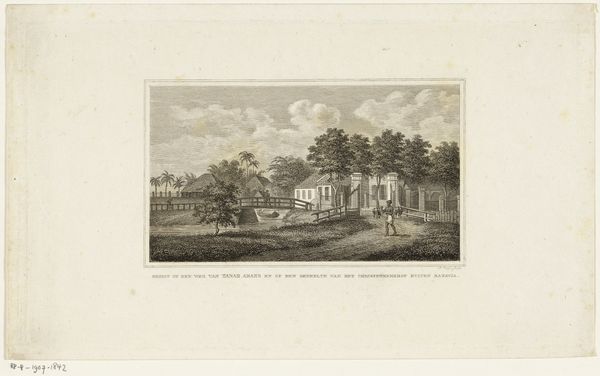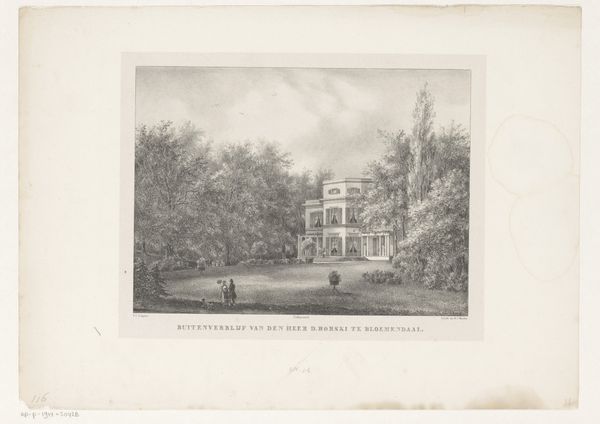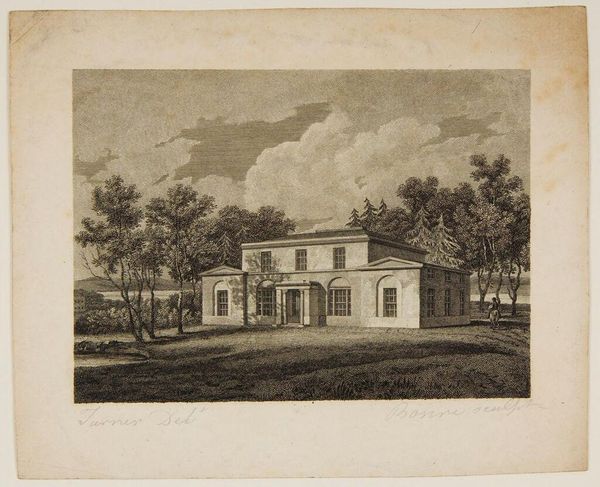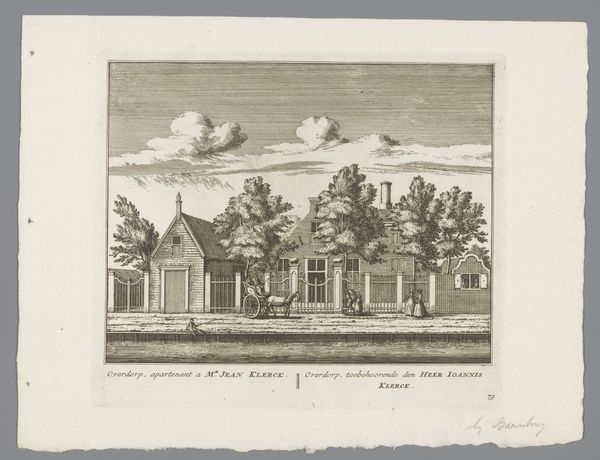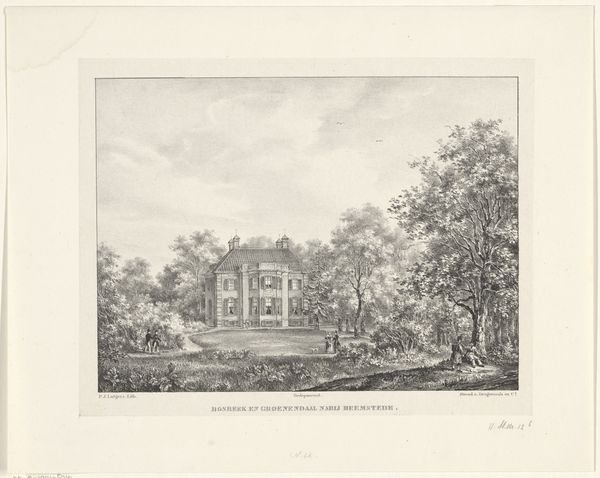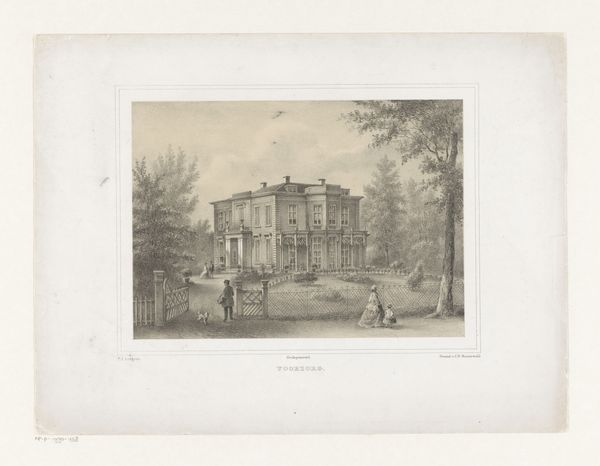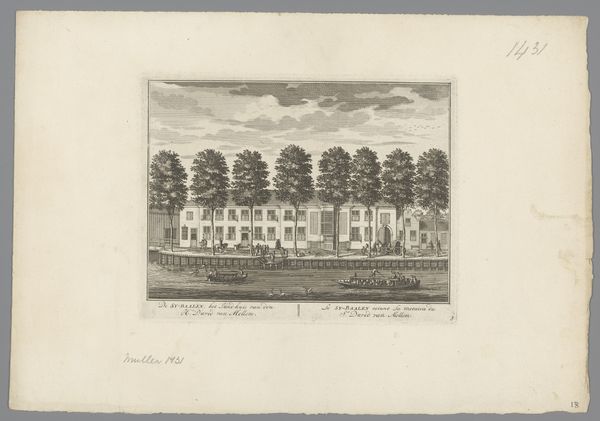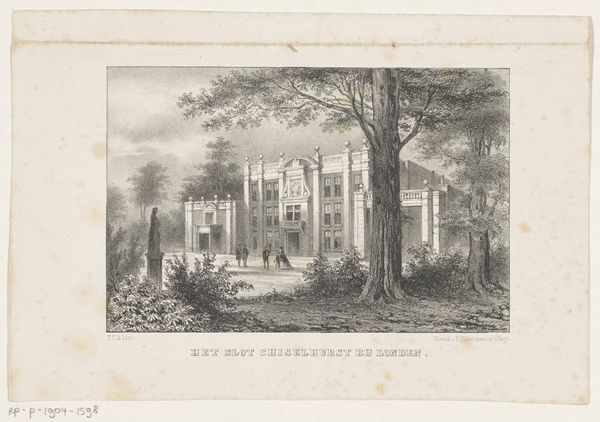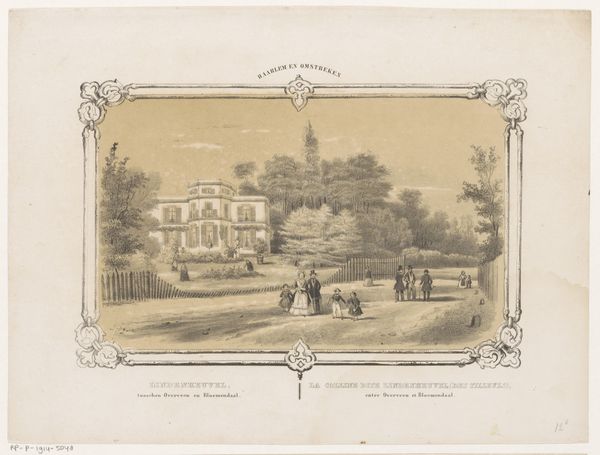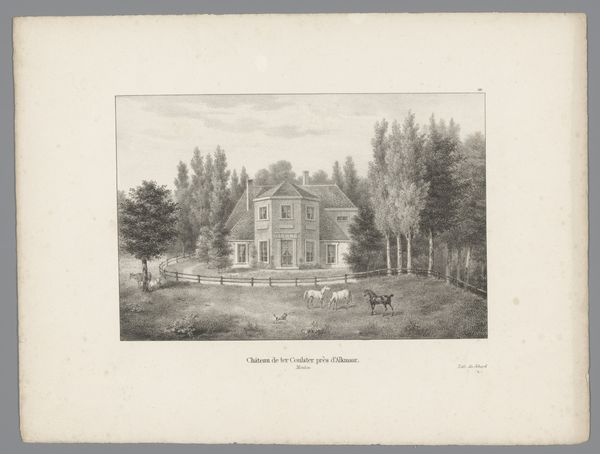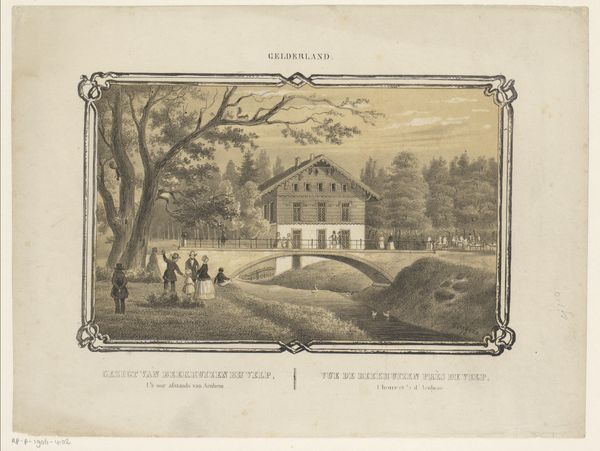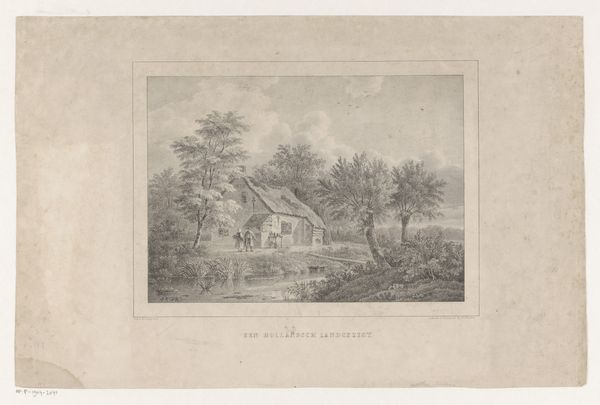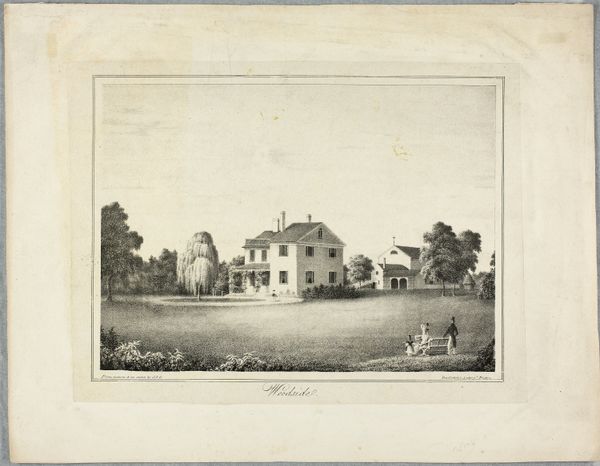
print, etching, engraving, architecture
#
neoclacissism
# print
#
etching
#
landscape
#
engraving
#
architecture
Dimensions: height 179 mm, width 210 mm
Copyright: Rijks Museum: Open Domain
Curator: Well, the first thing that strikes me is its serenity. The delicate etching and engraving create such a tranquil scene, like stepping back into a quieter time. Editor: Indeed. We’re looking at an etching and engraving from 1781, titled “Gezicht op een gebouw in op het landgoed van Wimpole Estate"— "View of a Building on the Wimpole Estate" to put it more plainly. It's an anonymous work that gives us insight into 18th-century British Neoclassicism. Curator: The anonymous artist really captures something. It's not just a building, it's an emblem. That geometric building centered amongst organic forms gives me such a sense of equilibrium. Note the column detail—those structures create so much repetition and depth of vision. It looks almost like an offering. Editor: That's an astute point. Wimpole Estate was the seat of the Earls of Hardwicke, major political players. These grand estates were potent symbols of power, intended to project wealth and refined taste. Depicting it this way allows us insight into the prevailing social order, where even nature bends to cultivated displays of privilege. Curator: Certainly, and consider the human figures tucked beneath the tree, almost afterthoughts. What of their roles and place within the grandeur of that edifice? Is there more of an idyllic symbolism on display here—of people and place living in pastoral harmony—and to what cost? It really makes one consider the historical perspective in greater depth. Editor: Perhaps. And while idyllic, it is worth recognizing how the construction and maintenance of such landscapes—which are very much constructed—depended on complex economic systems and the labor of many others not visible here, not commemorated in printmaking as 'art.' Even seemingly bucolic images can reinforce certain narratives. Curator: That is a compelling viewpoint to take! Editor: Yes—well, thank you for illuminating this. I’ve really begun to understand its complex, and nuanced presentation. Curator: Indeed. I appreciate that—and your insight into what might remain concealed.
Comments
No comments
Be the first to comment and join the conversation on the ultimate creative platform.
